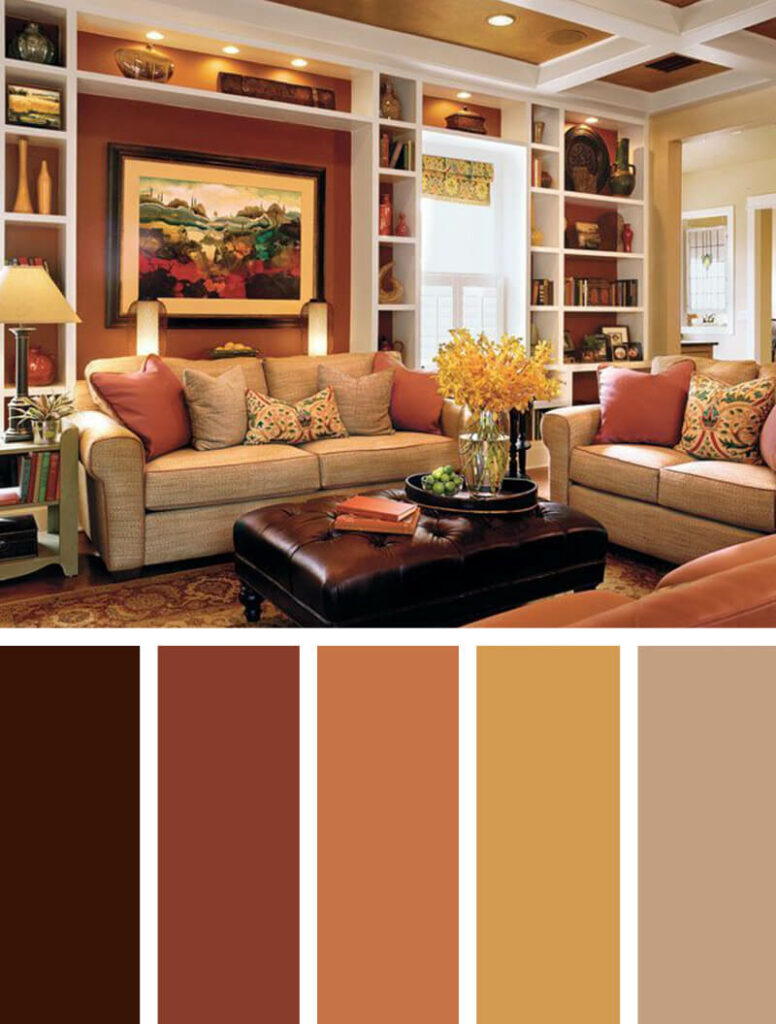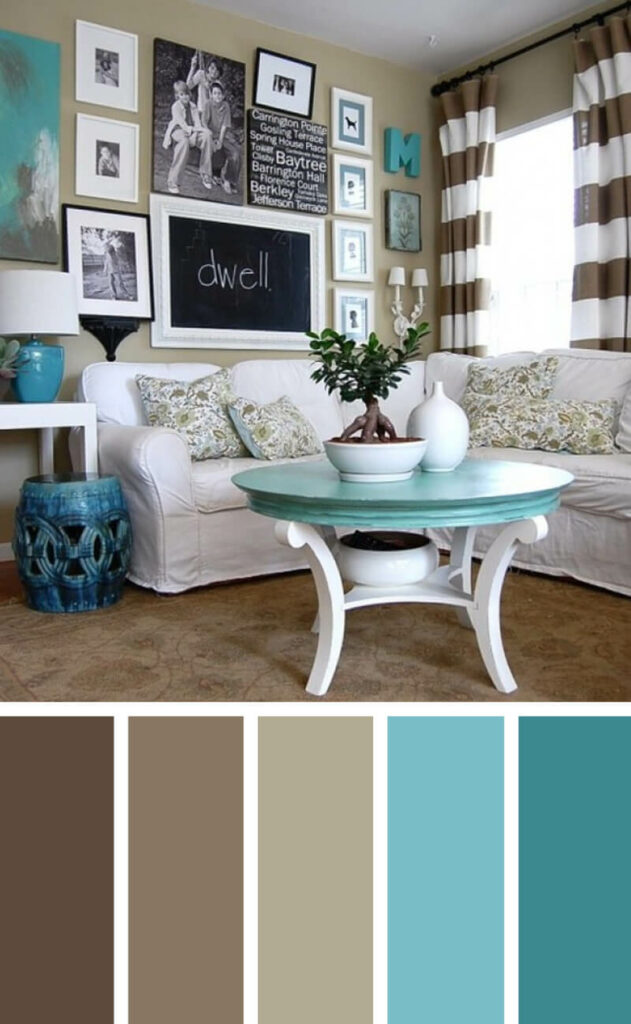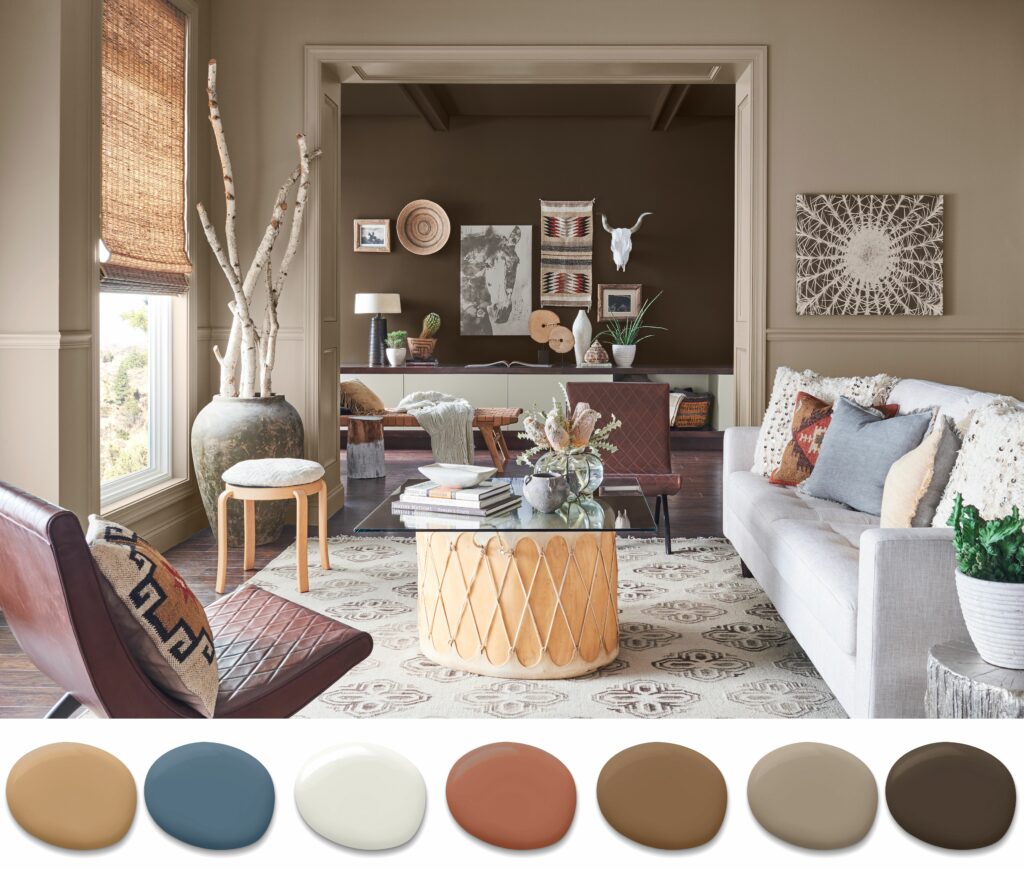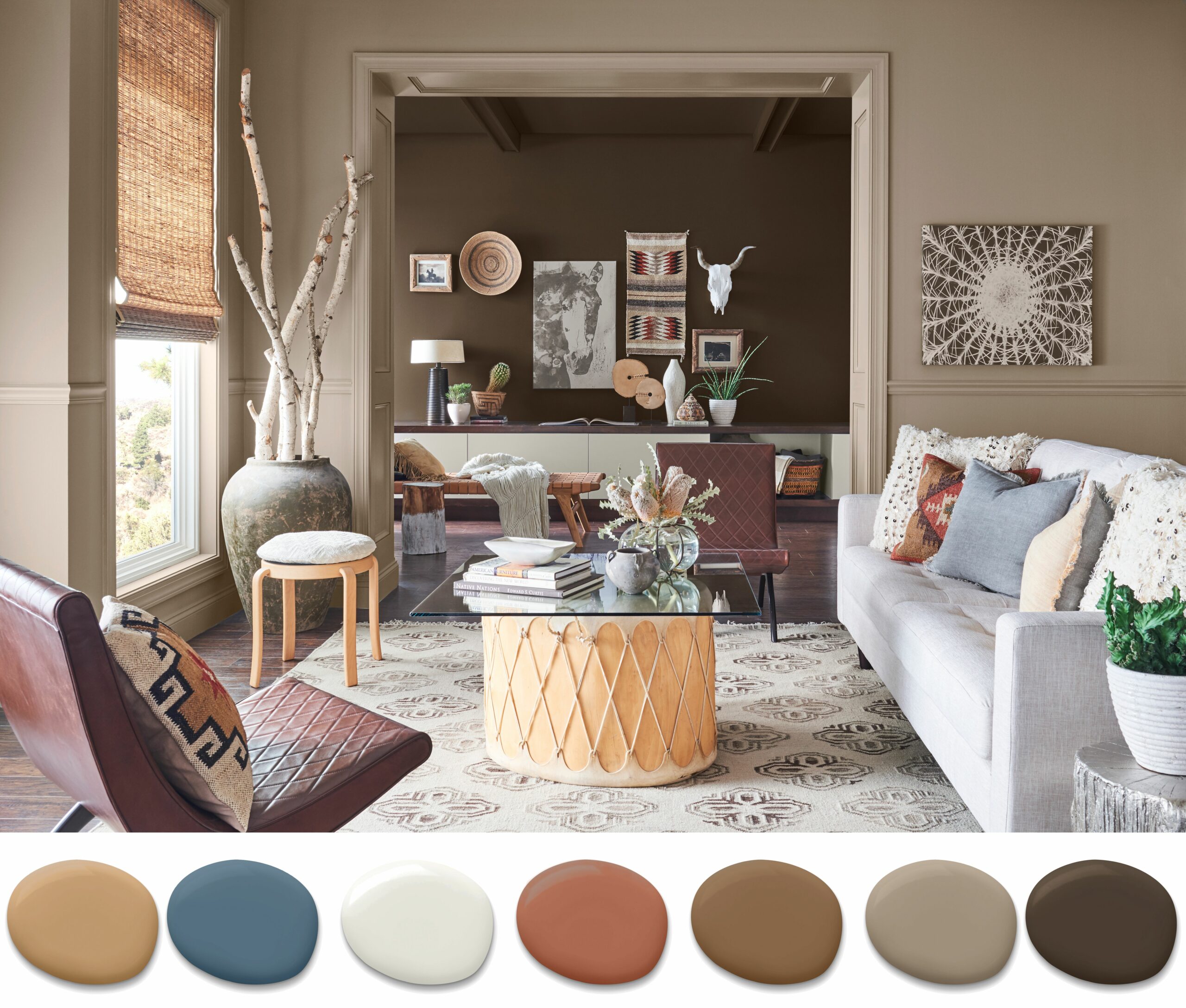Are you planning to bring a fresh look and style to your home interior this season? If you’re ready to tackle the challenge of picking out new colors for your walls, let us be your guide! When it comes to interior design, there’s no one-size-fits-all solution.
Instead, strategic palette selection is key — and that starts with selecting the right paint colors for each space. Whether you prefer muted tones or bold hues, here are some reliable tips and guidelines to help get the job done in a pinch. Ready to start creating an interior color scheme of dreams? Let’s go!
Table of Contents
The Guide to Choosing the Perfect Interior Color Palette

Choosing the right color palette can transform your home into a cozy haven, a vibrant space, or anything in between. Colors have the power to influence our thoughts, our feelings, and even our actions. So, let’s delve into the key factors you must consider while choosing the perfect paint colors for your interior spaces.
Consider the Room’s Function
Each room in your home serves a unique purpose, and the color should reflect that. For instance, you might want a calming color like light blue or soft green in your bedroom to promote relaxation. On the other hand, energetic colors such as yellows or reds might be a perfect choice for the kitchen or the living room, where lively interactions occur.
Light Direction and Quality

The amount and type of light a room receives can drastically affect how a color appears. Rooms with south-facing windows get warmer light and can handle cooler colors, while rooms with north-facing windows might benefit from warmer tones. Also, consider artificial lighting, as different light bulbs can cast different hues on your walls.
Architecture and Space
Your room’s architectural elements and size can also guide your color choice. For smaller spaces, lighter colors can make the room feel bigger and more open. In contrast, darker hues can create a sense of intimacy and coziness in larger rooms. Look at architectural details like moldings, built-in bookcases, or arched doorways as opportunities to apply accent colors.
Existing Furniture and Decor
Consider the color of your existing furniture and decor. These elements can guide you in choosing complementary or contrasting wall colors. If you have patterned upholstery or a brightly colored rug, you might want to pull colors from these items for your walls. Alternatively, if your furniture and decor are neutral, a bold wall color can add a pop of interest to your space.
Personal Aesthetics and Style
Your personal preference is equally important. The color you choose should resonate with your style and aesthetics. If you prefer a minimalist style, you might lean toward a monochromatic color scheme. But if you love bold and vibrant styles, don’t shy away from using strong, vibrant colors. Remember, it’s your living space, and it should reflect your personality.
Mood and Atmosphere
Think about the mood and atmosphere you wish to create in each room. For a serene and calming vibe, blues and greens are ideal. For a cheerful and welcoming feel, consider yellows or light oranges. Deep reds or browns can create a traditional and warm atmosphere.
Color Transitions
Consider how the color transitions from one room to another, especially in open spaces or adjoining rooms. The transition should be smooth and pleasing to the eye. Use a color wheel to find complementary colors or shades and tints of the same color for a harmonious transition.
Trends and Timelessness
While keeping up with trends can be exciting, it’s also important to consider the longevity of your chosen palette. Trendy colors might look great now, but will they stand the test of time? Opt for timeless hues if you don’t plan on repainting for a while. However, if you enjoy updating your home’s look regularly, feel free to experiment with trendy colors.
How to Paint Your House Like a Pro

Once you have made your final color selection, it’s time to get down to the business of painting. This process can be intimidating, especially if you’re a first-timer, but don’t fret! You can achieve professional-level results with the right approach, a steady hand, and a bit of patience. Here are a few tips and tricks to start your painting journey.
Prep the Walls
Before opening your paint can, you need to prepare your walls. This means cleaning them thoroughly and repairing any holes or cracks. A clean, smooth surface ensures that your paint adheres properly and provides a flawless finish.
Start with a Primer
Primer can make a big difference in your painting project. Not only does it provide a smooth surface for your paint, but it also helps the color show up brighter and last longer. It’s especially important to use a primer when painting over a darker color or porous surface.
Opt for Quality Tools
The importance of using high-quality brushes and rollers cannot be overstated. While they might be more expensive, they’ll provide a smoother, more even finish and will hold up better over the long term.
Use the ‘W’ Technique
When applying paint, use a ‘W’ technique. Start in one corner of the wall and paint a large ‘W’ with your roller. Then, without lifting the roller, fill in the empty spaces. This technique helps evenly distribute the paint and reduces the appearance of roller marks.
Protect Your Surroundings
Be sure to cover your furniture and floors with drop cloths to protect them from paint splatters and spills. Also, use painter’s tape around windows, doors, and trim to achieve clean, sharp lines.
Allow Proper Drying Time
Always allow adequate drying time between coats. If you rush this process, you risk peeling or uneven color. Refer to the manufacturer’s instructions on your paint can for recommended drying times.
Clean Up Properly
Once you’re done painting, clean your brushes and rollers thoroughly so they’re ready for your next project. Warm, soapy water will do the trick if you use latex paint. However, if you use oil-based paint, you’ll need a paint thinner for cleaning.
Final Thoughts
Choosing the right interior paint colors can be a daunting task, but it’s also an opportunity to transform your living space into a reflection of your style. Take your time and consider all the factors mentioned above to make an informed decision. And when it comes to painting, don’t rush. Follow these tips for a professional finish.
With the right color and technique, you can create a beautiful and inviting home that you’ll love spending time in. And if you don’t feel like doing it yourself, a team of professional painters in South Charlotte can help you achieve your desired look.
